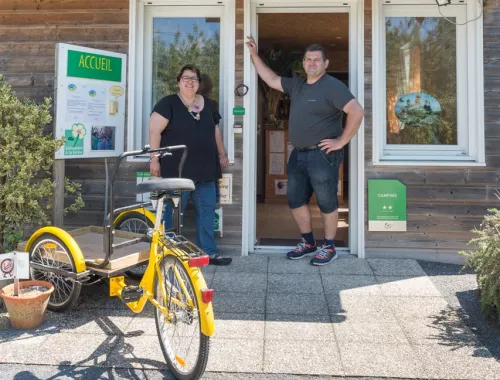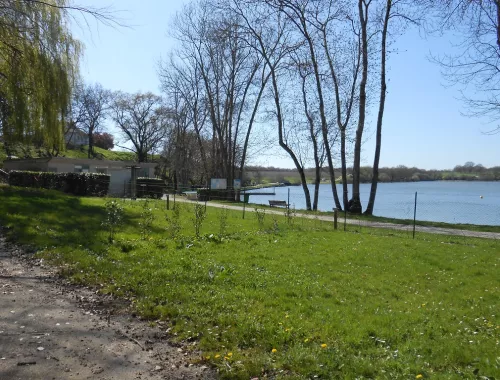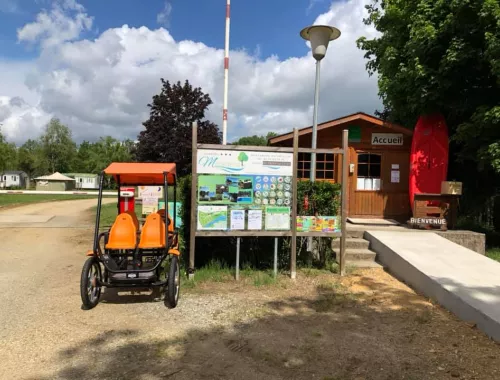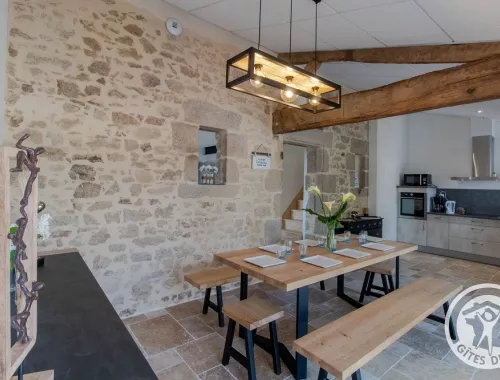A site dedicated to horses and nature sports, the Parc de l'Isle Briand in Le Lion d'Angers offers endless opportunities for discovery. Take a trip around the "Isle" along the rivers and "boires", secondary arms that are often dry in summer.
To begin with, take the long driveway leading uphill. On the right is the panoramic view of the racecourse, the river Oudon and the town of Le Lion-d'Angers; on the left, the more intimate atmosphere of the undergrowth. The undergrowth is home to a highly diverse population of bats. They make the most of the numerous cavities in the old trees. Less discreetly, you can hear woodpeckers (green, great spotted, black...), which also use old trees to dig their cavities and feed on wood-eating insects.
Signs show the trees that provide nesting places, which have been carefully catalogued in order to preserve them. After the educational panel on the role of dead wood, leave the main path and turn right. Chestnut, lime and plane trees, varieties that were very fashionable in the 19th century, dominate the English-style park laid out in 1850. The undergrowth has not been mown for some years now, to protect the wildlife and allow the forest to regenerate naturally. A sign tells you to turn right to go down to the wetland where the Oudon meets the Mayenne. The old poplar grove has been felled and the marsh is being restored. Saffron Oenanthe and Phalaris faux-roseau have taken advantage of the light to thrive. Recently introduced grazing will help to limit their growth. Behind the ash and alder trees that line the river, you can spot grey herons, egrets and moorhens. You'll hear the shrill whistle of the kingfisher. The metal footbridge that marks the boundary between the two rivers is an excellent vantage point. Take a detour here and then retrace your steps to follow the Mayenne towpath.
Watch out for bicycles! The Vélo Francette® is very busy, as is the river, which can be navigated through locks as far as Mayenne. You pass over the Ragon drinking water, under century-old trees and in front of the sumptuous facade of the château. At the northern boundary of the estate, turn left just before the headwaters of the boire, skirting the flood meadows tended by the brood mares. Cross over to the other side of the river and climb back up onto the plateau to cross the chestnut-rich forest to the main entrance.








